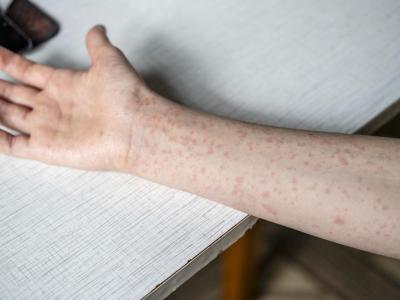Saudi Arabia reports 3 recent MERS cases
Saudi Arabia's Ministry of Health (MOH) reported three new MERS-CoV cases over the weekend, an uptick after few new cases were reported last week. At least one patient is linked to an ongoing outbreak at King Khalid University Hospital in Riyadh.
On Jun 25 a 33-year-old woman, a healthcare worker at the hospital, was diagnosed as having MERS-CoV (Middle East respiratory syndrome coronavirus). The expatriate was symptomatic and is in stable condition.
Yesterday the MOH reported two Saudi men as having MERS. A 62-year-old man from Riyadh is a household contact of a primary patient. He was asymptomatic and is in stable condition. The other case involves a 28-year-old man from Najran, also a household contact of a primary patient. He presented with symptoms and is also in stable condition. This is the third new case in Najran in the past 2 weeks.
The developments raise Saudi Arabia's MERS-CoV total cases since 2012 to 1,402, including 596 deaths. Fifteen patients are currently being treated for their infections.
Jun 25 MOH report
Jun 26 MOH report
Related Jun 20 CIDRAP News story
H7N7 avian flu antibodies found in Italian poultry workers
Five people who worked on poultry farms during an H7N7 avian flu outbreak in 2013 tested positive for antibodies to the virus, according to a letter published late last week in Emerging Infectious Diseases.
One million birds were culled after an outbreak of the highly pathogenic strain broke out across farms in Emilia-Romagna, Italy, in August of 2013. Workers wore protective face masks (including eye protection) and were monitored for symptoms during the 3-week outbreak.
In December of 2013 serologic testing of 93 workers involved in the culling showed H7N7 antibodies in three workers who had conjunctivitis during the outbreak. Two other workers who were asymptomatic during the outbreak also tested positive for antibodies. Because serum samples were not collected from the asymptomatic people during the outbreak, however, the researchers do not know if their seropositivity was caused by infection acquired during the outbreak.
All five workers said they received information about safety measurements during the avian flu outbreak and reported wearing appropriate personal protective equipment when handling birds.
"Future efforts should ensure timely collection of paired serum samples from all workers involved in avian influenza outbreaks, especially when infections occur in humans," the letter concludes. "Strict compliance with recommended preventive control measures and serologic surveillance programs are crucial to avoid and eventually assess risk for infections with avian influenza viruses in persons exposed to infected poultry."
At the time of the outbreak, the European Centre for Disease Prevention and Control considered the risk of H7N7 transmission to the general public to be low.
Jun 24 Emerg Iinfect Dis letter
Diabetics prescribed more antibiotics in hospital, community settings
Type 2 diabetics are prescribed antibiotics at about 20% higher levels than non-diabetics in both community and hospital settings, according to a study yesterday in Clinical Infectious Disease.
Type 2 diabetes (TD2) increases the risk of several bacterial infections, including urinary tract infections (UTIs), pneumonia, and skin infections, but there's a paucity of studies that quantify how often antibiotics are used within this patient population.
The nationwide-cohort study looked at antibiotic prescriptions written from 2004 to 2012 in Denmark. The researchers found 62% of diabetics got an antibiotic prescription, compared with 55% of the general population in the community setting. In hospitals, 19% of diabetics received a prescription, compared with 15% of general population. TD2 patients received prescriptions at a higher rate (23%) 6 months after diagnosis in both community and hospital settings.
The authors of the study note, "The higher infection estimates observed shortly after diabetes diagnosis, particularly for antibiotics, may be partly related to increased surveillance by general practitioners."
Women with TD2 were about 40% more likely to receive an antibiotic prescription than men with the disease, most likely due to the higher rate of UTIs among female patients, according to the authors.
Jun 26 Clin Infect Dis study













